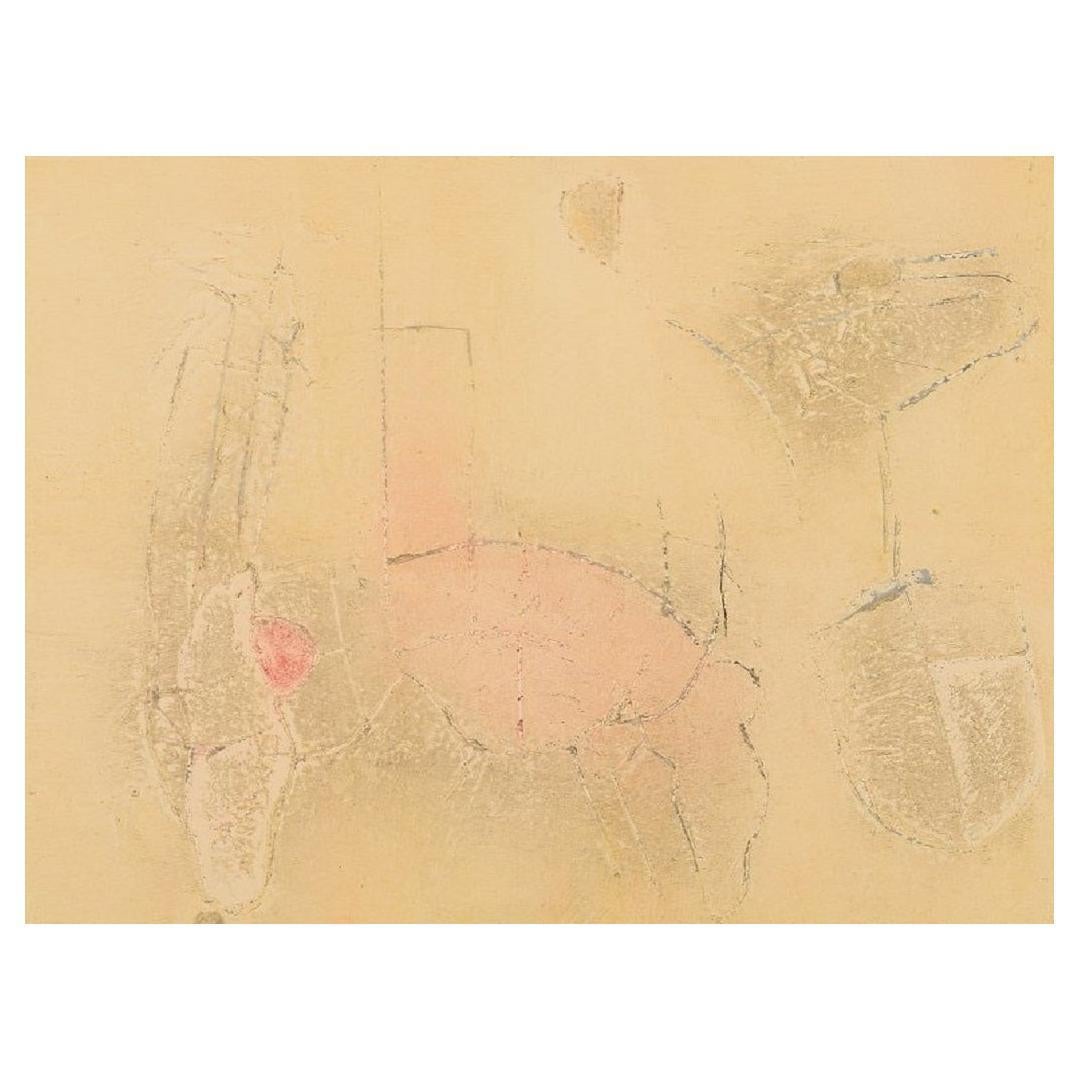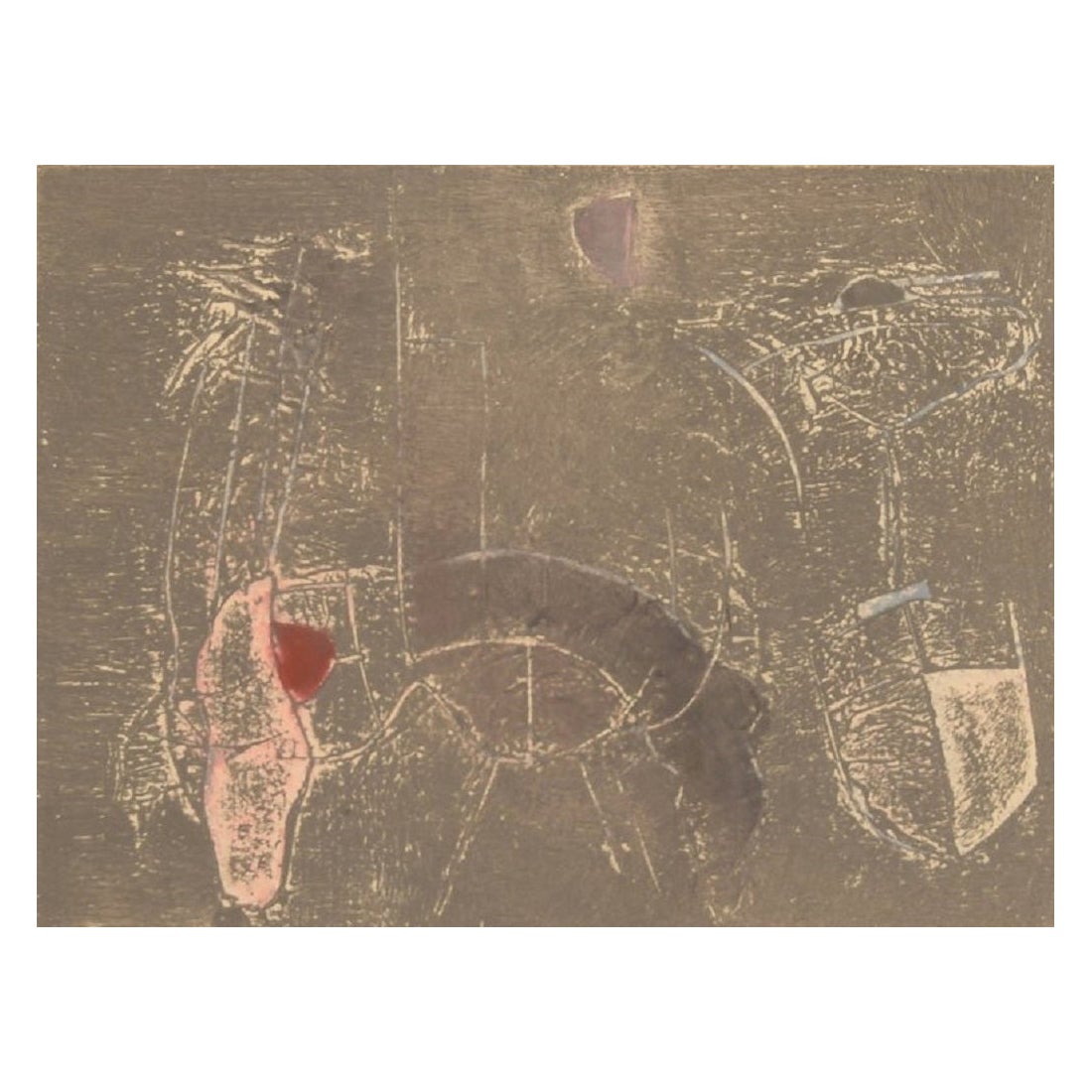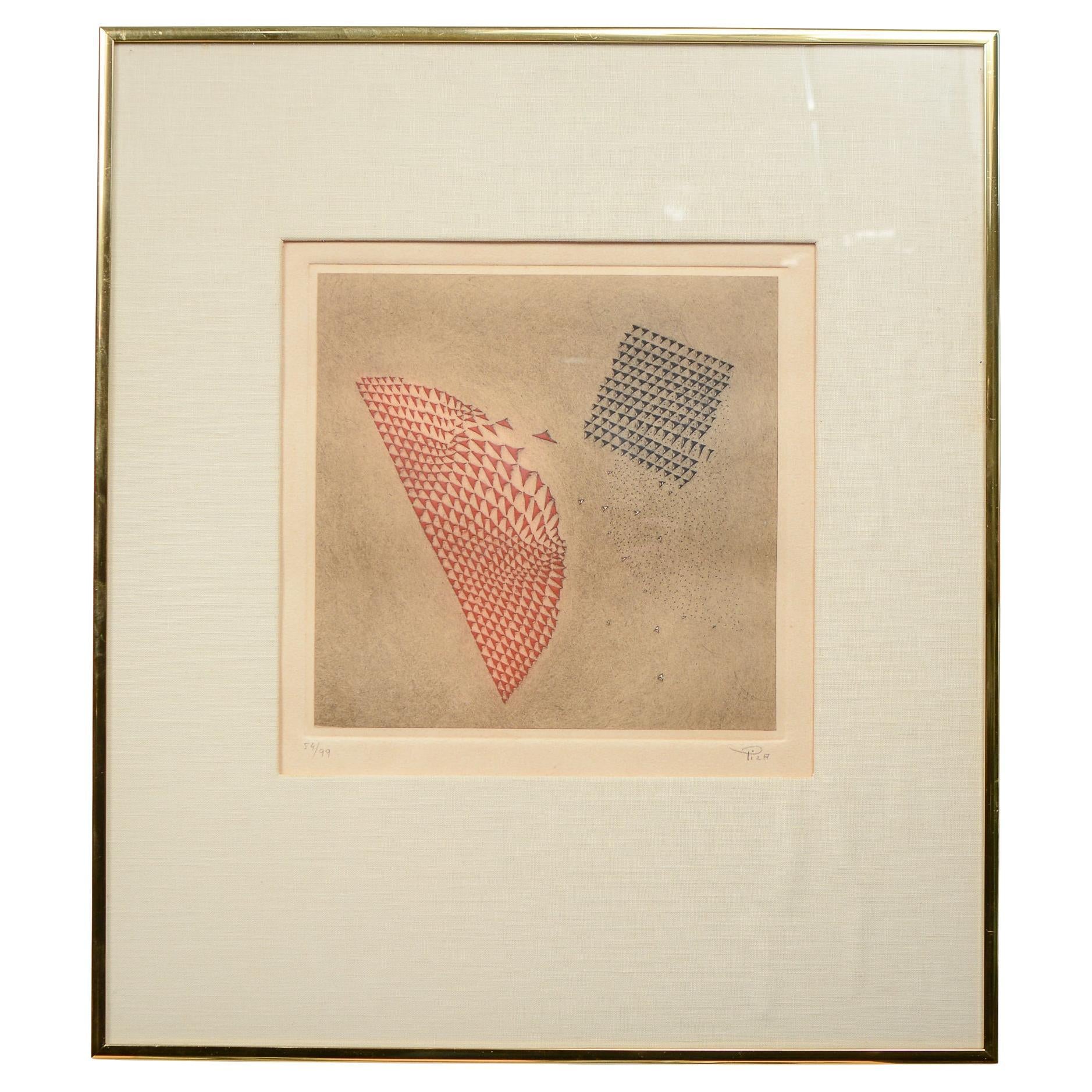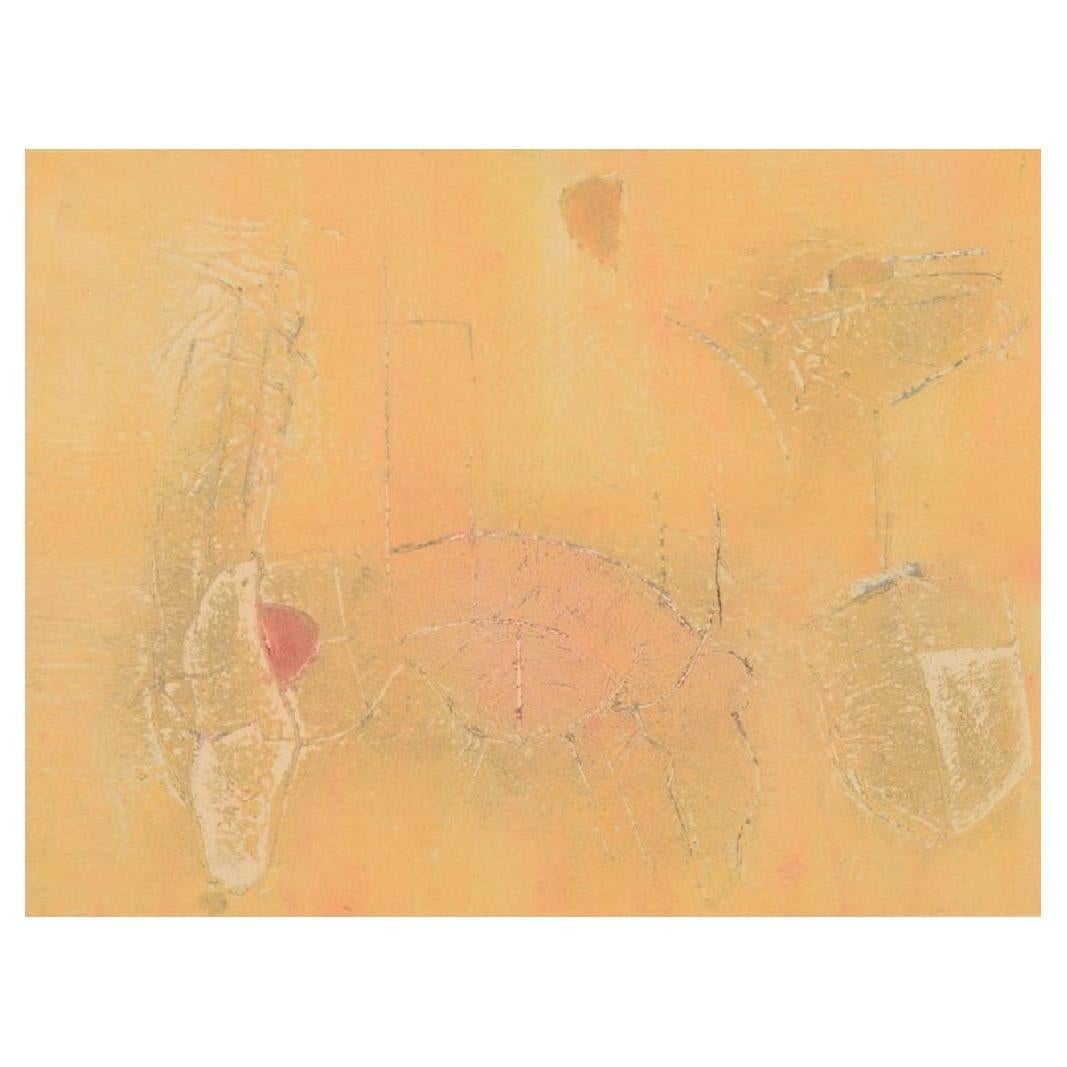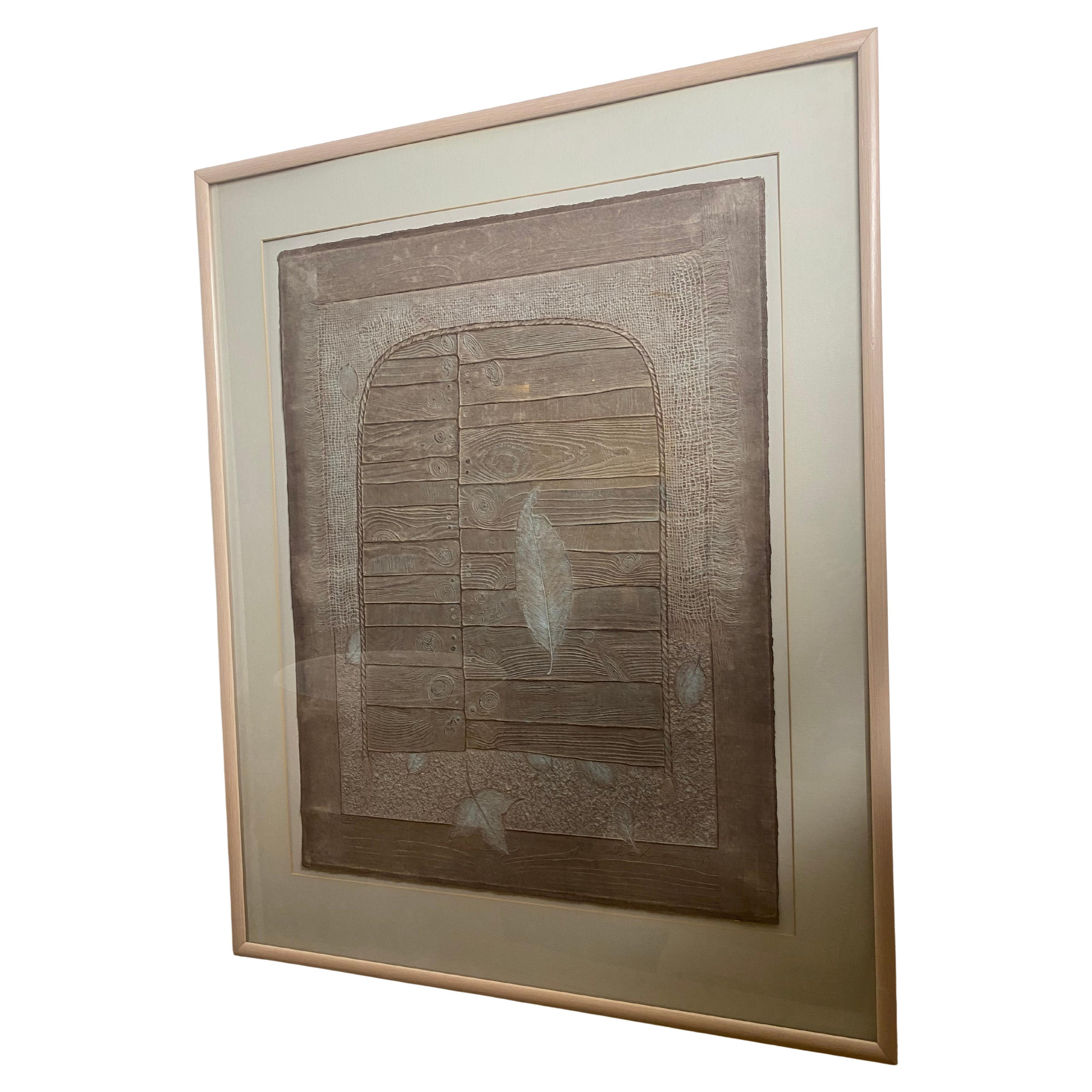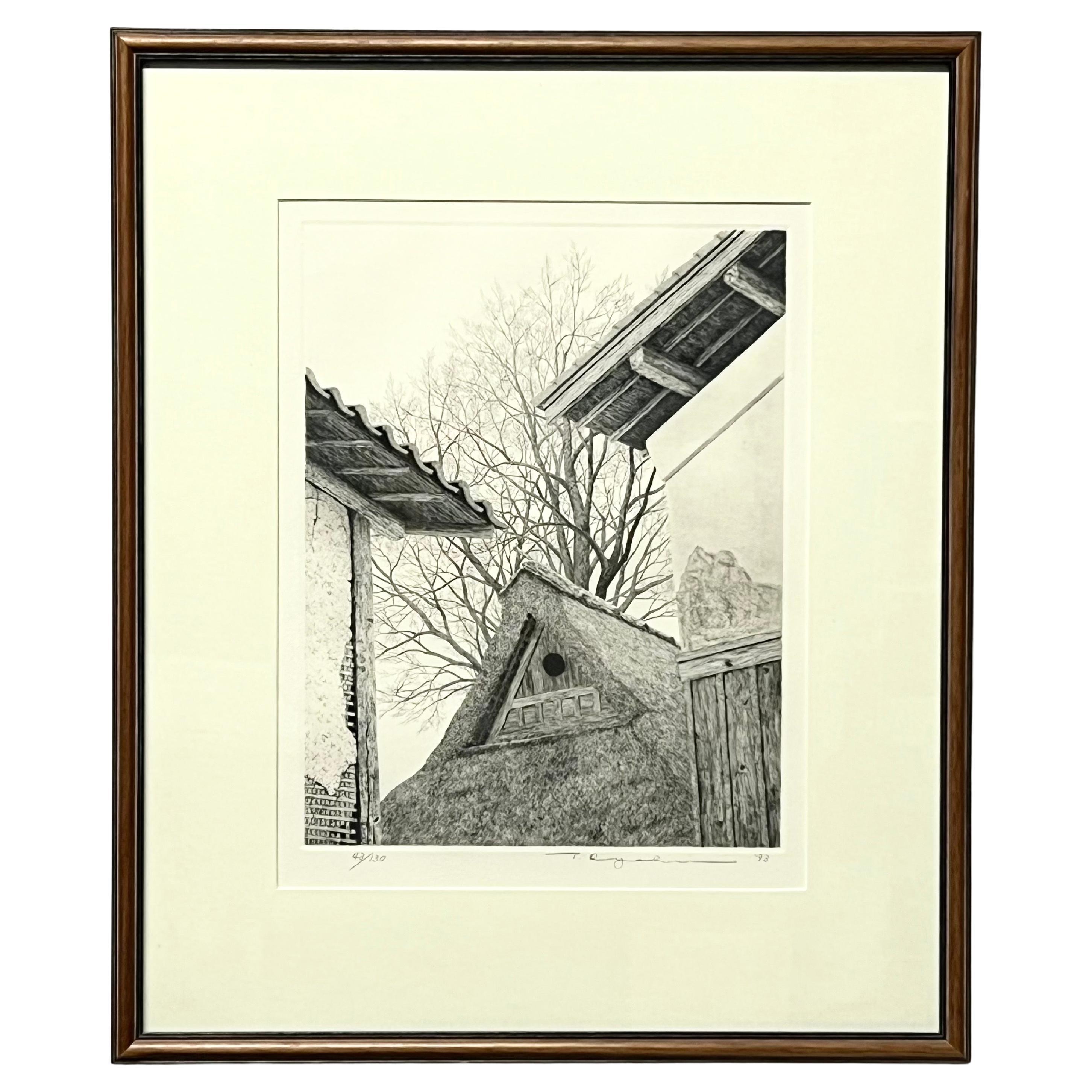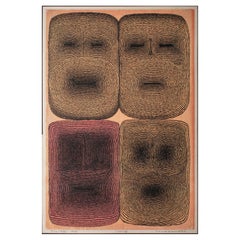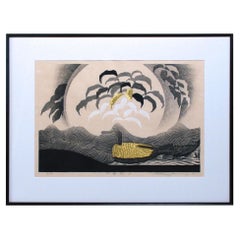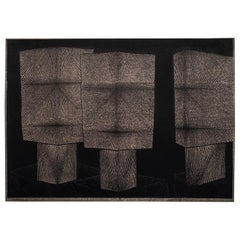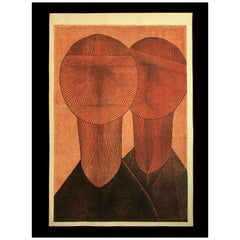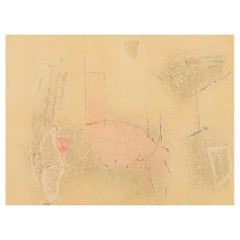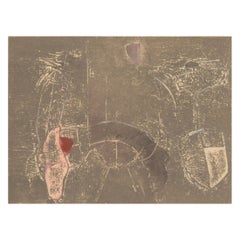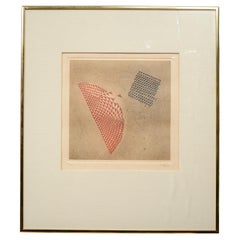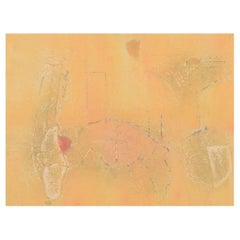Items Similar to Japanese Collagraph Print by Tsuguo Yanai, "Broken Heart"
Want more images or videos?
Request additional images or videos from the seller
1 of 6
Japanese Collagraph Print by Tsuguo Yanai, "Broken Heart"
$900
£678.69
€784.94
CA$1,262.70
A$1,403.56
CHF 735.72
MX$17,140.91
NOK 9,185.02
SEK 8,641.39
DKK 5,858.54
About the Item
Japanese Collagraph Print by Tsuguo Yanai (b. 1953, Hagi, Yamaguchi), titled “Broken Heart” in Japanese with the printing number 2/30 under the image on the left and pencil signature “’84” to the right. Exhibited and purchased at the 30th CWAJ Print Show in Tokyo 1985. Measuring: 24-1/2” high x 18” wide, Framed and Glazed 32” high x 24-3/4” wide. Excellent condition.
- Creator:Tsuguo Yanai (Artist)
- Dimensions:Height: 32 in (81.28 cm)Width: 24.75 in (62.87 cm)Depth: 1 in (2.54 cm)
- Style:International Style (Of the Period)
- Materials and Techniques:
- Place of Origin:
- Period:1980-1989
- Date of Manufacture:1985
- Condition:Wear consistent with age and use. Excellent.
- Seller Location:Point Richmond, CA
- Reference Number:Seller: TM-CY933021stDibs: LU1778239783432
About the Seller
5.0
Platinum Seller
Premium sellers with a 4.7+ rating and 24-hour response times
Established in 1999
1stDibs seller since 2015
697 sales on 1stDibs
Typical response time: 2 hours
- ShippingRetrieving quote...Shipping from: Palm Springs, CA
- Return Policy
Authenticity Guarantee
In the unlikely event there’s an issue with an item’s authenticity, contact us within 1 year for a full refund. DetailsMoney-Back Guarantee
If your item is not as described, is damaged in transit, or does not arrive, contact us within 7 days for a full refund. Details24-Hour Cancellation
You have a 24-hour grace period in which to reconsider your purchase, with no questions asked.Vetted Professional Sellers
Our world-class sellers must adhere to strict standards for service and quality, maintaining the integrity of our listings.Price-Match Guarantee
If you find that a seller listed the same item for a lower price elsewhere, we’ll match it.Trusted Global Delivery
Our best-in-class carrier network provides specialized shipping options worldwide, including custom delivery.More From This Seller
View All1969 Graphic Woodblock Print by Tomio Kinoshita, Japan
By Tomio Kinoshita
Located in Point Richmond, CA
Faces (4 Faces), 1969
Tomio Kinoshita (1923-2014), Japan
Woodblock print
Paper, pigment, sumi ink
Image: 27 high by 18.25 inches wide (68.5 by 46.4 cm)
Paper size: 28 high by 19...
Category
Vintage 1960s Japanese Mid-Century Modern Prints
Materials
Paper
Reika Iwami, Contemporary Japanese woodblock print
By Reika Iwami
Located in Point Richmond, CA
Contemporary Japanese woodblock print (Sosaku hanga) by the female artist Reika Iwami (b. 1927, Tokyo) titled “Water Fantasy A”of a setting full moon on th...
Category
Vintage 1980s Japanese International Style Prints
Materials
Paper
1981 Graphic Woodblock Print by Tomio Kinoshita, Japan
By Tomio Kinoshita
Located in Point Richmond, CA
Tomio Kinoshita (1923 - 2014)
Masks (No. 4), 1981
Woodblock print
Image Size: 22 high by 31 inches wide (56 by 79 cm)
Paper Size: 22.75 high by 31.5 inches wide (57.8 by 80 cm)
...
Category
Vintage 1980s Japanese Mid-Century Modern Prints
Materials
Paper
1960 Big Boys, Woodblock Print by Tomio Kinoshita, Japan
By Tomio Kinoshita
Located in Point Richmond, CA
Tomio Kinoshita (1923 – 2014)
Big Boys, 1960
Woodblock print
Image size: 32.75 high by 22 inches wide (83 by 56 cm)
Paper size: 35.5 high by 23.75 inches wide (90 by 60.3 cm)
Signed: in pencil lower right, Tomio Kinoshita
Titled: in pencil at lower left
Edition: 30/50
Condition: Very good
The woodblock for this large print was carved in 1958, just three years after Kinoshita’s began creating woodblocks. This print was signed and dated in 1960, but not numbered; prints were also pulled from this block in the 1970s, so it must have been one of more popular images.
One of his students has written, “As time progressed further, the postwar era saw improvements in nutrition, and children became taller and heavier than in the past, but their lack of physical exercise and severely inferior physical abilities became a social problem; this is ironically depicted in Big Boys.” In 1963, Kinoshita told him that he had just finished pulling a print of this image in response to a request from Unichi Hiratsuka...
Category
Vintage 1960s Japanese Mid-Century Modern Prints
Materials
Paper
Chinese ink and watercolors on paper, Luis Chan (Chen Fushan)
By Luis Chan (Chen Fushan)
Located in Point Richmond, CA
Chinese ink and water colours painted on paper by the artist, Luis Chan (Chen Fushan) 1905-1995, a fantasy landscape depicting islands in a dream blue sea, o...
Category
Vintage 1970s Hong Kong Post-Modern Paintings and Screens
Materials
Paper
Framed Japanese ink on paper artist's instruction for a Shunga print
Located in Point Richmond, CA
Japanese ink on paper wood block shunga artist’s color and pattern illustration with instructions for the woodblock carver and printer, depicting...
Category
Antique Late 19th Century Japanese Meiji Paintings and Screens
Materials
Paper
You May Also Like
Selma Daffre, Listed Brazilian Artist, Collograph on Paper, "Linhas"
Located in København, Copenhagen
Selma Daffre (b. 1951), listed Brazilian artist.
Collograph on paper. "Linhas".
Numbered 8/9.
Dated 1997.
Visible dimensions: 25 x 20 cm.
Total di...
Category
1990s Brazilian Modern Prints
Materials
Paper
Selma Daffre, Listed Brazilian Artist, Collograph on Paper, "Linhas"
Located in København, Copenhagen
Selma Daffre (b. 1951), listed Brazilian artist.
Collograph on paper. "Linhas".
Numbered 6/9.
Dated 1997.
Measures: Visible dimensions: 25 x 20 cm...
Category
1990s Brazilian Modern Prints
Materials
Paper
Abstract Etching by Arthur Luiz Piza
By Arthur Luiz Piza
Located in San Mateo, CA
Abstract etching by Brazilian born artist Arthur Luiz Piza.
Sight measurements are 10 3/8 inches x 10 3/8 inches.
There is some wrinkling in the linen mat.
Piza was born in Sao Pau...
Category
Late 20th Century French Mid-Century Modern Prints
Materials
Paper
Selma Daffre, Listed Brazilian Artist, Collograph on Paper, "Linhas"
Located in København, Copenhagen
Selma Daffre (b. 1951), listed Brazilian artist.
Collograph on paper. "Linhas".
Numbered 2/9.
Dated 1997.
Visible dimensions: 25 x 20 cm.
Total d...
Category
1990s Brazilian Modern Prints
Materials
Paper
Ha Bik Chuen, Collograph, 1977, Hong Kong
Located in Melbourne, AU
A superb and exciting natural collograph by the noted Hong Kong artist, Ha Bik Chuen. Signed and dated, 1977.
Bik Chuen's work is well-documented in one of the most extraordinary ar...
Category
Vintage 1970s Hong Kong Organic Modern Prints
Materials
Paper
Ryohei Tanaka Etching Japan c1993
By Tanaka Ryohei
Located in Oakland, CA
Incredibly detailed Ryohei Tanaka etching of a structure on the Japan countryside c1993. Beautifully framed and matted. Signed in pencil by artist.
Ryohei Tanaka (1933-2019) was wor...
Category
1990s Japanese Modern Prints
Materials
Glass, Wood, Paper
More Ways To Browse
Mori Yoshitoshi
Hagiwara Hideo
Jade Dragon Boat
Takahashi Bird
Yoshida Hodaka
Reika Iwami
Terada Akitoyo
Tsuchiya Koitsu
Akiyama Iwao
Shima Tamami
Weeping Monk
Yamaguchi Gen
Yukio Katsuda
Wicker Or Rattan Chairs With Feet And Arms
Ruby And Or Diamond Rings
English Silver Plated And Cut Crystal Claret Jug Or Decanter
Trumpet Form Hukin And Heath Glass And Silver Claret Jug Or Decanter
Gorham Frosted And Clear Glass Crystal Large Centerpieces Or Candle Holders
